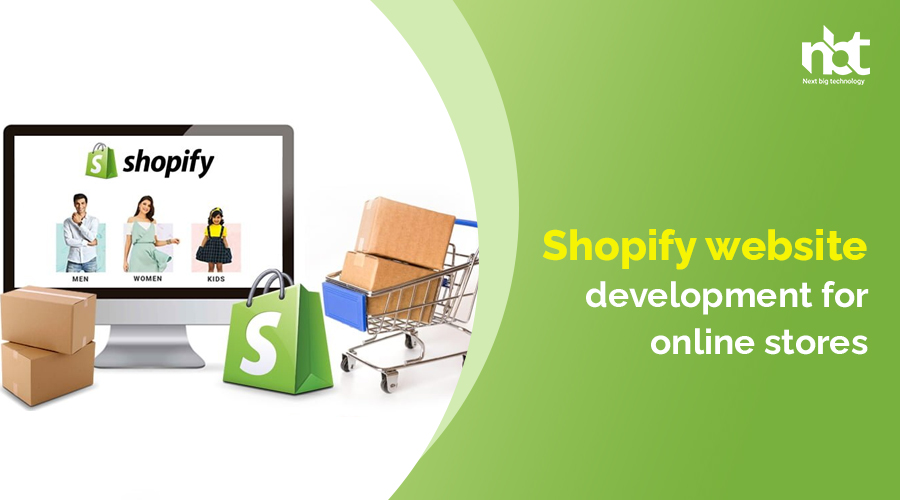Table of Contents
Shopify Platform Overview
In the digital landscape, where the realm of commerce is continually evolving, Shopify stands tall as a robust and versatile e-commerce platform. With its intuitive interface, extensive suite of features, and user-friendly approach, Shopify has become the cornerstone for businesses of all scales aiming to establish and expand their online presence. This comprehensive overview delves deep into the multifaceted aspects of Shopify, exploring its history, key features, customization capabilities, app ecosystem, and the pivotal role it plays in shaping the e-commerce landscape.
Evolution and Foundation:
Shopify’s inception dates back to 2006 when Tobias Lütke, Daniel Weinand, and Scott Lake set out to create an e-commerce solution for their online snowboarding equipment store. Their endeavor led to the birth of Shopify, initially developed to cater to their specific needs. Over time, recognizing the potential to revolutionize online retail, Shopify evolved into a comprehensive platform that empowers businesses worldwide.
Core Features and Functionality:
At the core of Shopify lies its user-friendly interface, enabling entrepreneurs to build and manage their online stores with ease. The platform offers an array of features, including:
- Storefront Customization: Shopify provides an extensive library of themes, allowing users to create visually appealing and unique storefronts. Its drag-and-drop editor and customization options cater to various branding needs.
- Product Management: Adding, organizing, and updating products is streamlined, empowering businesses to efficiently manage their inventories, pricing, and variations.
- Secure Checkout: Shopify ensures secure transactions through its SSL encryption and PCI compliance, fostering trust and confidence among customers.
- Payment Processing: With support for multiple payment gateways, Shopify facilitates seamless transactions, accommodating diverse customer preferences.
- SEO and Marketing Tools: Built-in SEO features enable businesses to optimize their online presence, while marketing tools aid in promotions and customer engagement.
Customization and Flexibility:
One of Shopify’s strengths lies in its flexibility and customization capabilities. The platform offers:
- App Store: Shopify’s App Store boasts thousands of apps catering to various business needs. From inventory management and customer support to marketing automation and analytics, these apps enhance store functionality.
- APIs and Development Environment: Shopify’s APIs allow developers to create custom solutions and integrations, enabling businesses to tailor their stores to specific requirements.
- Themes and Templates: The platform offers a wide array of professionally designed themes that users can customize to reflect their brand identity, ensuring a unique and engaging storefront.
Scaling Opportunities:
Shopify’s scalability is a key factor driving its widespread adoption. Whether a budding startup or an established enterprise, businesses can seamlessly scale their operations on the platform. Shopify’s tiered subscription plans cater to different business sizes, offering the required tools and support for growth.
Ecosystem and Community:
Beyond its features and functionalities, Shopify fosters a thriving ecosystem and community. From Shopify Partners who provide development and design services to the vibrant community forums and events, the platform encourages collaboration, learning, and networking among entrepreneurs and developers.
Constant Innovation and Support:
Shopify’s commitment to innovation is evident through its regular updates, introducing new features and improvements to enhance user experience. The platform’s dedicated customer support ensures that users receive timely assistance, fostering a positive and supportive environment.
Setting Up Shopify
Setting up a Shopify store is an exciting venture that involves careful planning, meticulous customization, and a strategic approach to unleash the full potential of your online business. In this comprehensive guide, we’ll delve into the step-by-step process of setting up a Shopify store, ensuring it’s optimized for success.
Understanding Shopify:
Shopify, known for its user-friendly interface and scalability, serves as a powerful platform for creating and managing online stores. Its intuitive dashboard, array of templates, and extensive features make it an ideal choice for businesses of all sizes.
Step 1: Getting Started
a. Sign Up and Choose a Plan
- Visit Shopify’s website and sign up for an account.
- Select a suitable plan based on your business needs—consider factors like product range, expected traffic, and budget.
b. Setting Up Your Store
- Enter your store name and basic information.
- Customize your domain or choose a Shopify-provided domain.
Step 2: Design and Customization
a. Choose a Theme
- Explore the Theme Store within Shopify.
- Select a theme that aligns with your brand identity and offers the desired functionalities.
- Customize the chosen theme to reflect your brand’s unique style and visual appeal.
b. Customizing Your Store
- Edit sections like homepage, product pages, navigation menus, etc., using Shopify’s user-friendly editor.
- Upload your logo, product images, and relevant visuals.
Step 3: Adding Products
a. Product Management
- Navigate to the ‘Products’ section in your dashboard.
- Add product details, including title, description, price, variants, and images.
- Organize products into categories or collections for easier navigation.
b. Inventory and Shipping
- Set up inventory tracking to manage stock levels effectively.
- Configure shipping options based on your preferences—free shipping, flat rates, or carrier-calculated rates.
Step 4: Optimizing for Sales and Marketing
a. SEO Optimization
- Enhance your store’s visibility by optimizing product descriptions, meta titles, and meta descriptions with relevant keywords.
- Utilize Shopify’s built-in SEO tools to improve search engine rankings.
b. Marketing Strategies
- Implement marketing tactics such as email campaigns, discounts, and promotions.
- Integrate social media platforms for broader reach.
Step 5: Setting Up Payment Gateways and Security
a. Payment Integration
- Choose preferred payment gateways for smooth transactions.
- Configure payment settings and ensure a secure checkout process.
b. Security Measures
- Enable SSL certification to encrypt customer data and secure transactions.
- Regularly update and monitor for security patches.
Step 6: Mobile Responsiveness and Testing
a. Mobile Optimization
- Ensure your store is responsive and optimized for mobile devices.
- Test across various screen sizes to guarantee a seamless user experience.
b. Testing and Review
- Conduct thorough testing of your store’s functionalities, including checkout processes, navigation, and responsiveness.
- Gather feedback and make necessary adjustments.
Step 7: Launch and Ongoing Management
a. Launching Your Store
- Preview your store and ensure everything is set up correctly.
- Announce the launch across your network and social media platforms.
b. Ongoing Maintenance and Support
- Regularly update content, product offerings, and visuals to keep the store fresh.
- Utilize Shopify’s customer support for any technical assistance or queries.
Customizing Themes
Unveiling the Canvas of Customization: Exploring Shopify Themes
In the realm of e-commerce, a visually appealing and functionally sound website serves as the gateway to success. Shopify, with its diverse array of themes, offers a canvas upon which entrepreneurs can paint their brand identity. However, to truly stand out in the digital landscape, customization is key. Let’s embark on a comprehensive journey into the world of customizing Shopify themes, exploring the tools, techniques, and strategies to elevate your online store.
Understanding Shopify Themes:
1. Foundation of Design:
Shopify themes serve as the foundation of your online store’s design. These templates, equipped with varying layouts and functionalities, act as the visual and interactive interface between your brand and your customers.
2. Accessibility and Customization:
Shopify themes range from free to premium, offering accessibility to all. Each theme provides customization options, allowing you to tailor the look and feel to align with your brand’s aesthetics and messaging.
3. Responsive Design:
With the surge in mobile browsing, responsive design is paramount. Shopify themes are crafted to ensure a seamless experience across devices, optimizing user engagement and conversions.
Exploring the Customization Terrain:
1. Choosing the Right Theme:
Selecting a theme that resonates with your brand is the initial step. Explore the Shopify Theme Store, filtering based on industry, features, and aesthetic preferences. Consider responsiveness, user reviews, and included features before making a choice.
2. HTML, CSS, and Liquid:
Customization often involves delving into HTML, CSS, and Shopify’s Liquid templating language. Understanding these languages empowers you to tweak and personalize various elements of the theme.
3. Customizing Colors, Fonts, and Layouts:
Tailoring the color palette, typography, and layout to echo your brand’s identity is crucial. Shopify’s customization options allow modifications to these elements without delving into code, offering a user-friendly approach.
4. Adding Custom Sections and Blocks:
To enhance the theme’s functionality, adding custom sections and blocks is advantageous. These can include testimonials, featured products, or unique call-to-action segments, enhancing user experience and conversion rates.
5. Integrating Apps and Extensions:
Leveraging Shopify apps and extensions seamlessly within your customized theme enriches its capabilities. These integrations can range from analytics and marketing tools to customer support and inventory management.
Advanced Customization Techniques:
1. Advanced CSS and HTML Modifications:
For intricate design alterations, familiarity with CSS and HTML is indispensable. Customizing the finer details like button styles, hover effects, and spacing often requires diving into the code.
2. Customizing Template Files:
Shopify’s Liquid templating language allows customization at a deeper level by modifying template files. This level of customization demands a strong understanding of Liquid and coding practices.
3. Optimizing for Performance:
As customization grows, ensuring optimal site performance is crucial. Compressing images, minimizing code, and optimizing scripts are key practices to maintain a speedy and user-friendly website.
4. Testing and Iteration:
Continuous testing and iteration are essential. Conduct A/B tests to gauge user response to changes, allowing data-driven decisions for ongoing enhancements.
Best Practices and Pitfalls to Avoid:
1. Backup and Version Control:
Before making extensive modifications, always create backups to avoid potential data loss. Version control systems like Git can track changes, enabling easy rollback if necessary.
2. Maintaining Consistency:
Consistency in design and user experience across various pages fosters a cohesive brand identity. Ensure that customizations align with your brand’s ethos without compromising usability.
3. Avoiding Over-customization:
While customization is empowering, overdoing it can lead to cluttered designs and compromised performance. Striking a balance between functionality and aesthetics is key.
4. Staying Updated:
Themes, plugins, and Shopify itself undergo updates. Regularly updating your theme and associated elements ensures security, bug fixes, and access to new features.
Payment Gateway Integration
Understanding Payment Gateway Integration in Shopify
E-commerce’s backbone lies in secure and seamless transactions. Payment Gateway Integration within Shopify amplifies the platform’s capabilities, allowing merchants to accept payments from customers worldwide conveniently. This process involves linking the store to a payment processor, ensuring the secure transfer of funds from the customer to the merchant.
Importance of Payment Gateway Integration
1. Enhanced Customer Experience:
- Streamlined Checkout Process: Integrating a variety of payment gateways simplifies the checkout process, reducing friction and enhancing user experience.
- Trust and Security: Secure payment gateways build trust among customers, crucial for fostering long-term relationships.
2. Global Reach and Accessibility:
- Catering to Diverse Audiences: By integrating multiple payment gateways, businesses can cater to customers globally, offering preferred payment methods in different regions.
- Accessibility for Various Devices: Mobile-friendly payment gateways accommodate customers using smartphones or tablets, ensuring accessibility across devices.
3. Increased Sales and Conversions:
- Reduced Cart Abandonment: Offering diverse payment options reduces cart abandonment rates, as customers can choose their preferred method.
- Expanding Market Reach: Supporting various payment gateways opens doors to new markets, potentially increasing sales and conversions.
Key Considerations for Payment Gateway Integration in Shopify
1. Security Measures:
- Compliance with Industry Standards: Ensure the selected payment gateways adhere to industry security standards like PCI DSS (Payment Card Industry Data Security Standard).
- SSL Certification: Integration with gateways that utilize SSL encryption guarantees secure transactions, protecting customer data.
2. Transaction Fees and Costs:
- Evaluating Fees: Different payment gateways impose varying transaction fees. Understanding these costs and their impact on profit margins is essential before integration.
3. Customer Preferences:
- Analyzing Target Markets: Research customer preferences in different regions to integrate payment gateways that align with their preferred payment methods.
Step-by-Step Guide to Payment Gateway Integration in Shopify
1. Research and Selection:
- Explore the available payment gateway options in Shopify, considering factors like fees, supported countries, and customer preferences.
2. Set up the Gateway:
- Access the Shopify Admin panel and navigate to Settings > Payment Providers.
- Select ‘Choose a third-party provider’ and pick the preferred payment gateway.
- Enter the required credentials provided by the gateway service to connect it with your Shopify store.
3. Testing Transactions:
- Execute test transactions to ensure the integration functions seamlessly, processing payments accurately without errors.
4. Monitoring and Optimization:
- Regularly monitor transactional data, analyzing success rates and identifying areas for improvement.
- Optimize by evaluating customer feedback and fine-tuning the payment process for a frictionless experience.
Popular Payment Gateways for Shopify Integration
1. PayPal:
- Known for its global reach and ease of use, PayPal offers a seamless integration process.
2. Stripe:
- With its user-friendly interface and extensive feature set, Stripe is popular for its flexibility and customization options.
3. Authorize.Net:
- Trusted for its security measures and diverse payment options, Authorize.Net is suitable for businesses of all sizes.
4. Square:
- Square’s simplicity and transparent pricing make it an attractive choice, especially for small businesses.
Optimizing for SEO
Crafting a Shopify website involves more than just aesthetics and functionality; it entails a strategic approach to optimize for search engines. Search Engine Optimization (SEO) is the cornerstone of online visibility, driving organic traffic and ensuring your store ranks well in search engine results pages (SERPs). In this comprehensive guide, we’ll delve deep into the world of SEO optimization for your Shopify website.
Understanding SEO and its Importance:
SEO comprises a myriad of strategies and practices aimed at enhancing a website’s visibility on search engines like Google, Bing, and Yahoo. The ultimate goal is to increase organic (non-paid) traffic by ranking higher in relevant search queries.
Shopify’s SEO Features:
Shopify, as a platform, comes equipped with built-in SEO functionalities that empower users to optimize their online stores. These include:
- Editable Meta Tags: Shopify allows customization of meta titles, descriptions, and URLs for each webpage, enabling you to insert relevant keywords and attract potential visitors.
- Clean URL Structures: Automatically generating clean and search-engine-friendly URLs, Shopify ensures that your website structure aids rather than hinders SEO efforts.
- Mobile Responsiveness: With the increasing dominance of mobile devices, Shopify’s responsive design ensures your store is optimized for various screen sizes, a factor considered by search engines for ranking.
- Page Speed Optimization: Fast-loading pages contribute significantly to better SEO rankings. Shopify’s infrastructure is optimized for speed, enhancing user experience and SEO performance.
Optimizing On-Page Elements:
- Keyword Research: Understanding your target audience’s search behavior is key. Use tools like Google Keyword Planner, SEMrush, or Ahrefs to identify high-value keywords relevant to your products or services.
- Title Tags and Meta Descriptions: Craft compelling and descriptive titles (within 60 characters) and meta descriptions (within 160 characters) that incorporate relevant keywords, enticing users to click through.
- Optimized Content: High-quality, unique, and relevant content plays a pivotal role in SEO. Ensure product descriptions, blog posts, and other textual content are informative, engaging, and keyword-rich but avoid keyword stuffing.
- Image Optimization: Optimizing image alt tags with descriptive, keyword-rich text enhances accessibility and helps search engines understand the content of your images.
Off-Page SEO Strategies:
- Link Building: Acquiring high-quality backlinks from authoritative websites signals credibility to search engines. Engage in guest posting, influencer collaborations, or directory submissions to build a robust backlink profile.
- Social Media Integration: While not a direct ranking factor, a strong social media presence can amplify brand visibility, driving traffic and indirectly impacting SEO.
Leveraging Shopify Apps for SEO:
Shopify’s App Store offers a plethora of SEO-centric apps to further enhance your store’s optimization:
- SEO Manager: Automates tasks like meta tag optimization, alt tag generation, and bulk editing, streamlining your SEO efforts.
- Plug in SEO: Assists in identifying and fixing SEO issues on your site, ensuring it’s in line with best practices.
Monitoring and Analytics:
Utilize tools like Google Analytics and Shopify’s own analytics to track your website’s performance. Monitor metrics like organic traffic, bounce rates, and keyword rankings to assess the effectiveness of your SEO strategies.
Continuous SEO Evolution:
SEO is an ongoing process that requires constant monitoring and adaptation. Stay updated with algorithm changes, industry trends, and evolving consumer behaviors to ensure your Shopify store remains optimized for search engines.
Marketing and Promotion
In the bustling landscape of e-commerce, having a well-crafted Shopify store is just the beginning. To thrive in the digital marketplace, strategic marketing and promotion are indispensable. With a myriad of tools and techniques available, a comprehensive approach can amplify the visibility, reach, and success of your online store.
Understanding Your Audience:
Before delving into marketing strategies, understanding your target audience is pivotal. Utilize Shopify’s analytics and customer insights to decipher demographics, preferences, and behaviors. This foundational knowledge serves as a compass guiding your marketing efforts.
Crafting a Brand Story:
A compelling brand narrative forms the backbone of successful marketing. Establish a story that resonates with your audience—highlight your brand’s values, mission, and uniqueness. Consistency across your website, social media, and marketing campaigns fosters brand loyalty.
Search Engine Optimization (SEO):
Optimizing your Shopify store for search engines is fundamental. Conduct keyword research to identify terms relevant to your products. Integrate these keywords organically into product descriptions, meta tags, and URLs. Shopify’s built-in SEO features simplify this process, boosting your store’s visibility on search engine result pages.
Content Marketing:
Creating engaging and informative content not only attracts potential customers but also establishes your brand as an authority in your niche. Incorporate a blog section on your Shopify store to share relevant articles, how-to guides, and product showcases. Compelling content not only drives organic traffic but also encourages social sharing and backlinking.
Email Marketing:
Harness the power of email marketing to nurture relationships with both potential and existing customers. Utilize Shopify’s integrated email marketing tools or third-party apps to create personalized, automated email campaigns. From welcome emails to abandoned cart reminders and promotional offers, a well-crafted email strategy can significantly boost sales.
Social Media Marketing:
In today’s digital era, social media is a powerhouse for reaching and engaging audiences. Identify platforms where your target audience is most active and curate content tailored to each channel. Utilize Shopify’s social media integration to streamline product showcasing, facilitate seamless shopping experiences, and run targeted ad campaigns.
Influencer Collaborations:
Partnering with influencers in your niche can amplify your store’s visibility. Identify influencers whose audience aligns with your target demographic. Collaborate for product reviews, sponsored posts, or giveaways. Influencer endorsements can bolster credibility and drive traffic to your Shopify store.
Paid Advertising:
Explore paid advertising options to accelerate your store’s growth. Shopify integrates with various advertising platforms, such as Google Ads and Facebook Ads. Leverage these platforms to create targeted campaigns based on demographics, interests, and online behavior. Monitor ad performance and optimize accordingly to maximize ROI.
Retargeting and Remarketing:
Implement retargeting strategies to re-engage potential customers who have visited your store but left without making a purchase. Utilize Shopify’s pixel integration to track user behavior and display targeted ads to bring them back to complete their purchase.
Analyzing and Iterating:
Regularly monitor and analyze the performance of your marketing efforts using Shopify’s analytics tools or third-party integrations. Identify what strategies yield the best results and iterate accordingly. Adaptation and optimization based on data insights are crucial for sustained success.
Customer Support and Engagement
Customer support and engagement stand as the pillars of a thriving business in today’s competitive landscape. In the realm of e-commerce, where interactions are predominantly virtual, establishing robust customer support mechanisms and fostering meaningful engagement are paramount to success. This comprehensive guide delves into the nuances of customer support and engagement strategies, spanning various channels and techniques, to empower businesses in delivering exceptional customer experiences.
Understanding Customer Support in the Digital Age:
In the digital era, customer support transcends traditional helplines and extends to multiple touchpoints. From live chat and email to social media and chatbots, businesses have a myriad of avenues to connect with their customers.
Building a Stellar Support Infrastructure:
- Responsive and Accessible Channels: Providing seamless accessibility across diverse channels ensures customers can reach out in their preferred manner.
- Knowledge Base and Self-Service: Empowering customers with readily available information through FAQs, tutorials, and troubleshooting guides reduces dependency on direct support while enhancing user experience.
- Personalization and Empathy: Tailoring interactions to address individual needs and demonstrating empathy creates a rapport that fosters long-term loyalty.
Embracing Omnichannel Support:
The integration of various channels into a cohesive support ecosystem enables businesses to deliver consistent and efficient service across platforms. This approach ensures a seamless transition between channels while maintaining a unified customer experience.
The Role of Technology:
- AI-Powered Solutions: Chatbots and AI-driven support systems streamline interactions, offering instant responses and solutions to common queries.
- Data Analytics: Leveraging customer data enables businesses to anticipate needs, personalize interactions, and proactively address issues, enhancing overall support efficiency.
Cultivating Customer Engagement:
Engagement goes beyond mere transactions; it embodies building relationships and fostering brand loyalty.
- Content Strategies: Compelling and relevant content not only attracts but also engages customers, providing value beyond products or services.
- Social Media Engagement: Leveraging social platforms as interactive hubs facilitates direct communication, feedback collection, and community building.
- Personalized Engagement: Tailoring interactions based on customer preferences, behavior, and purchase history cultivates a sense of exclusivity and strengthens relationships.
Implementing Engagement Strategies:
- Interactive Campaigns: Contests, polls, and interactive campaigns encourage participation, driving engagement and brand visibility.
- Email Marketing: Crafting personalized, targeted email campaigns keeps customers informed, entertained, and engaged with your brand.
- Community Building: Establishing forums, groups, or online communities fosters a sense of belonging among customers, encouraging discussions and peer-to-peer support.
Measuring Success:
Tracking and analyzing metrics such as customer satisfaction scores, response times, engagement rates, and conversion rates provide valuable insights. These metrics aid in refining strategies and continuously improving customer support and engagement initiatives.









